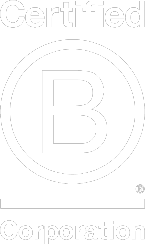Employee engagement and productivity are inextricably linked. In a poll conducted by Gallup in 2019, results showed that teams with high employee engagement are 22% more productive.
To understand this link first we must define productivity and engagement.
What is employee productivity?
Employee productivity looks at the efficiency of a worker or workforce. Analysing the output of their activities against their working hours. If an employee or workforce has a high productivity rate, it would be permissible to assume that they assist in the increased profitability of the company.
Employee engagement is the understanding an employee has about the goals and visions of the company they work for and the emotional commitment or alignment that the employee must achieving these.
If we look at the above definitions alone, it would be acceptable to surmise that if employees are committed to achieving the goals of a company, then, they will in turn be more productive. Although with a little further consideration, the power of an effective engagement strategy can be truly uncovered.
As out lined in our previous blog there are nine factors on which employee engagement is based around. It is true that employers can affect the productivity of their workforce in many ways, including through motivation, reward and recognition. However, when these methods are used in isolation their potential to impact productivity is limited.
Alternatively the implementation of a clear engagement strategy, that considers the varying needs of that particular work force, offers far greater potential to not only improve productivity but to create efficiencies within the business on a wider scale. A report analysing workforces in the USA indicated that business units with high engagement saw a 17% increase in productivity and a 41% reduction in absenteeism.
Key to employee engagement is clear communication. Particularly when it comes to setting a destination, through goals, visions missions etc. A report published by IBM said that 80% of employees felt more engaged when their work was consistent with the core values of their organisations. This is supported by a study from Reward Gateway that found 94% of employees felt that personal alignment to an organisations mission and values were critical.
To summarise, a truly effective method of achieving increased productivity is through an effective employee engagement strategy. One that takes into consideration the dynamics and idiosyncrasies of your unique workforce and lays out a method to ensure the greatest buy-in from your employees to your business’s goals and visions.
/DRPG%2045th%20Anniversary/DRPG%2045th%20White%20-%20No%20Text.png)


 Back
Back

/Blog%20Images/AEO%20SEO%20-%20Digital%20Blog.jpg)



